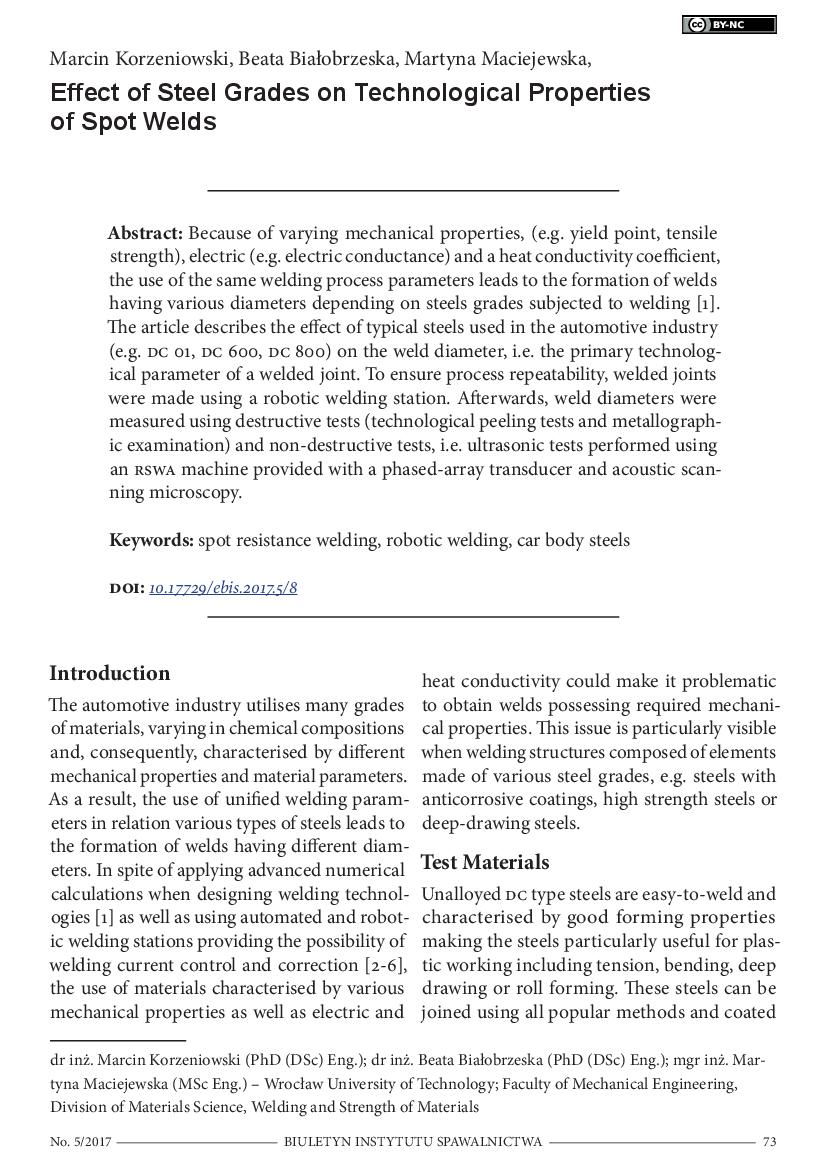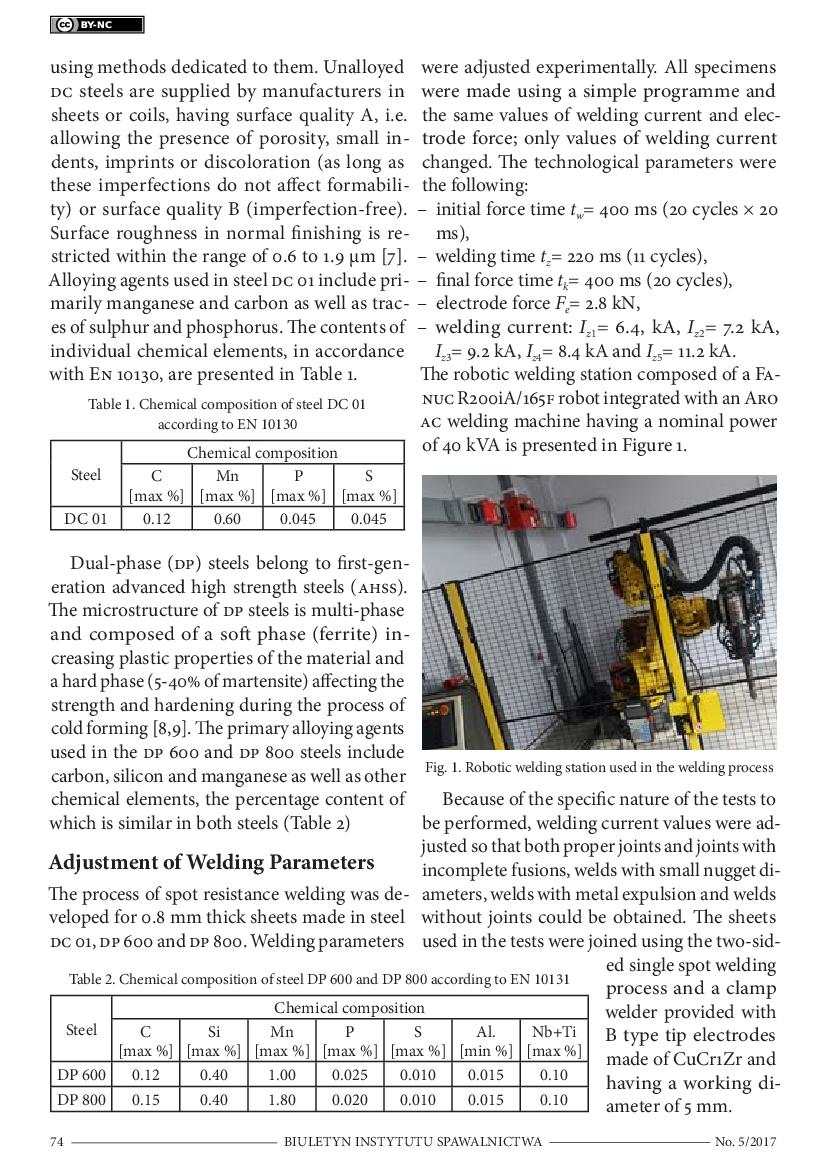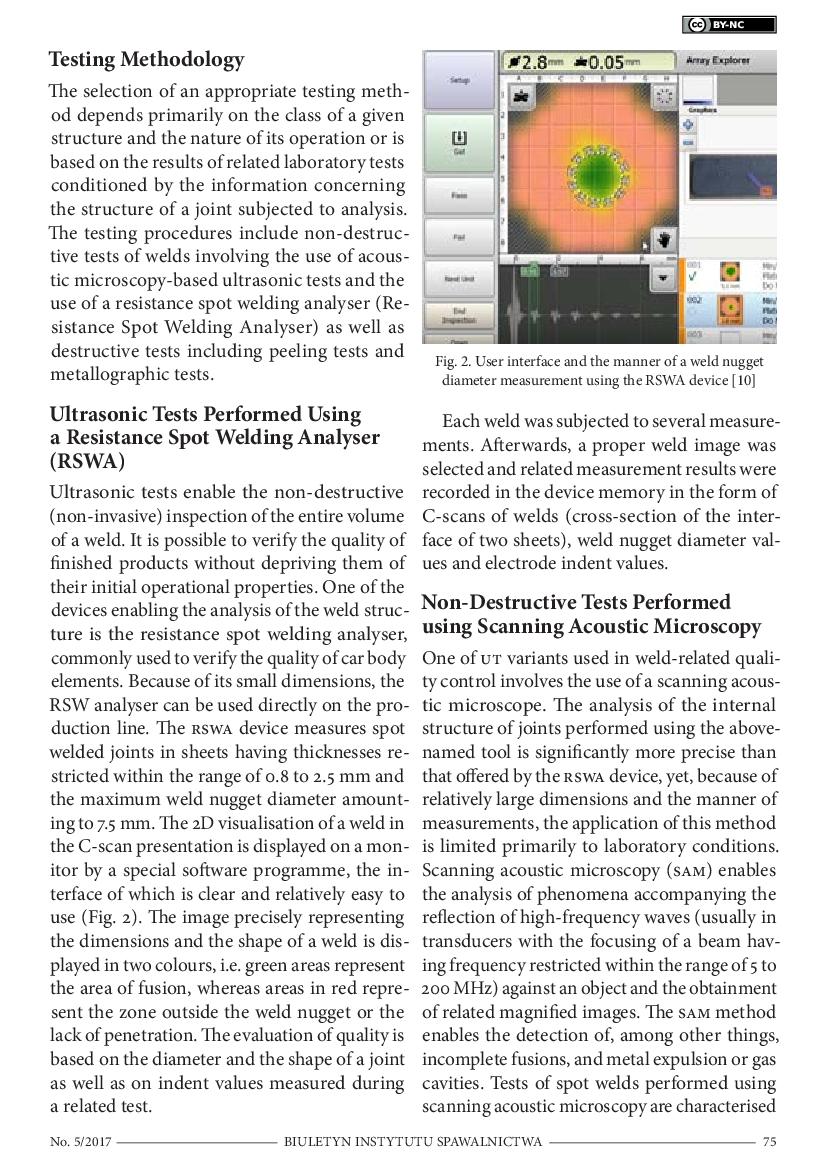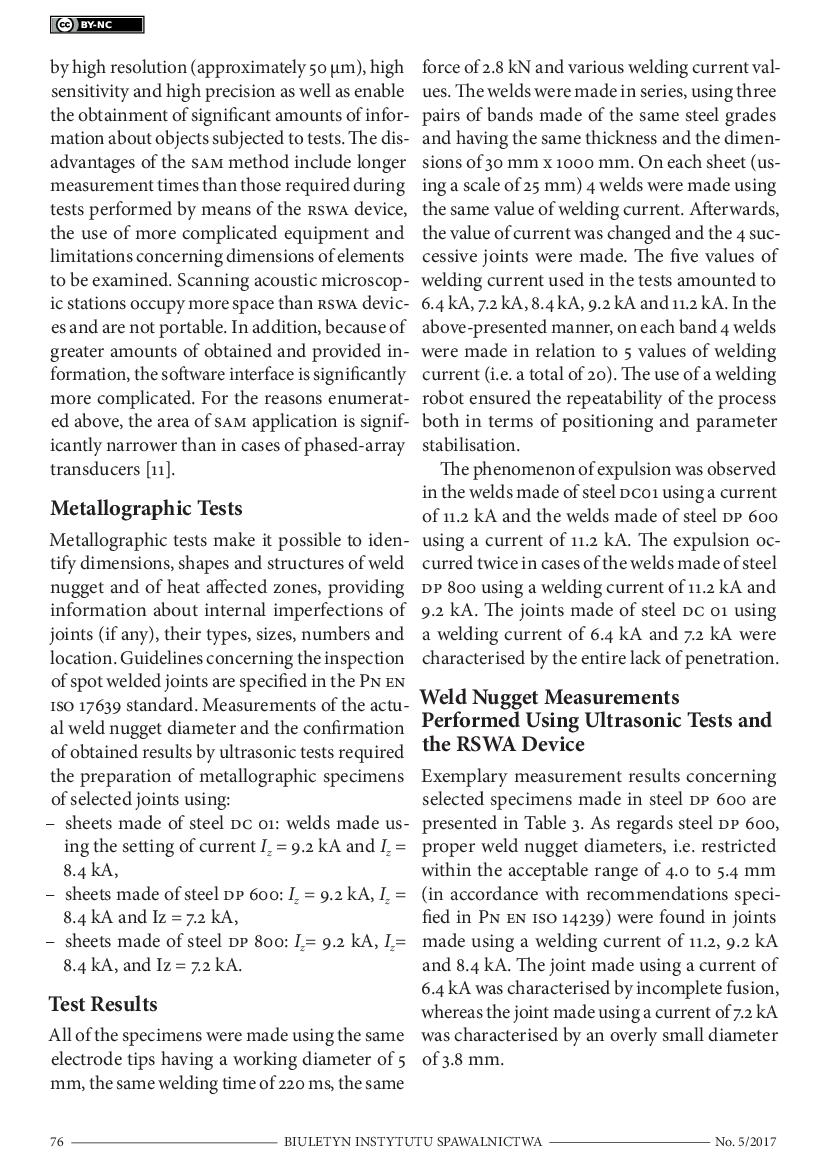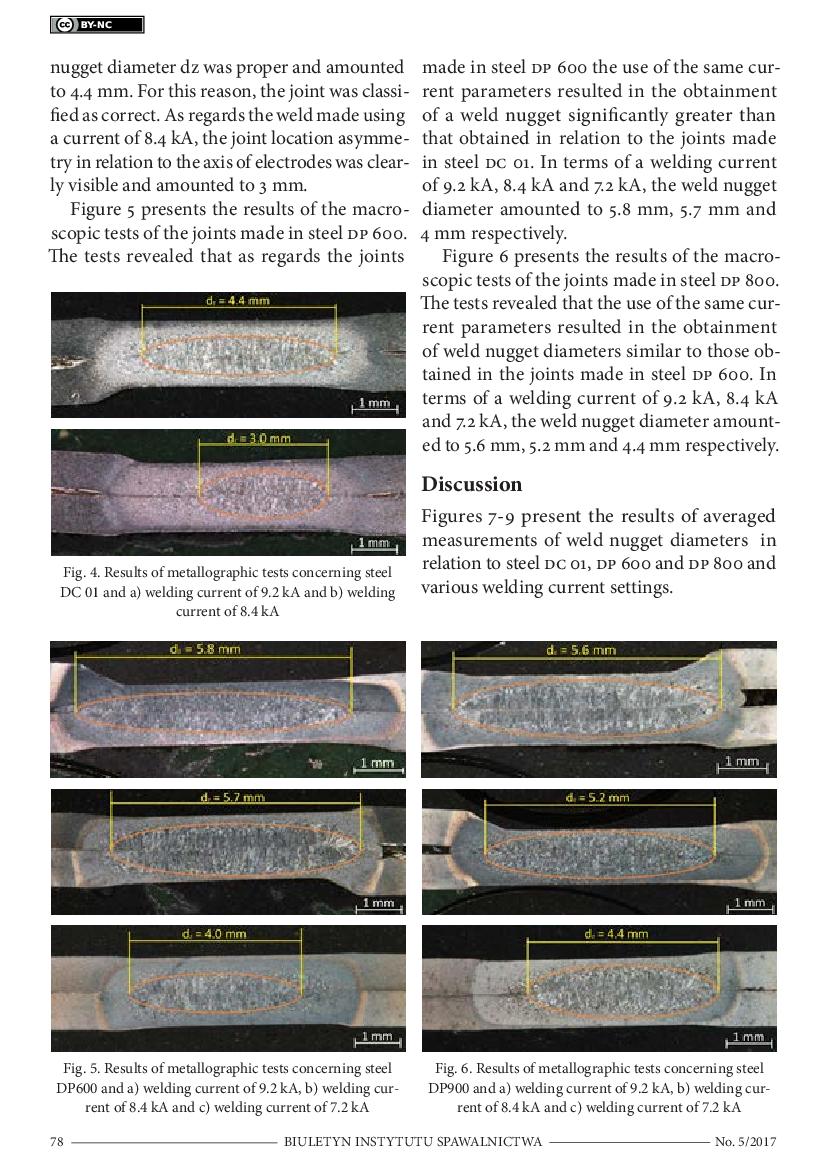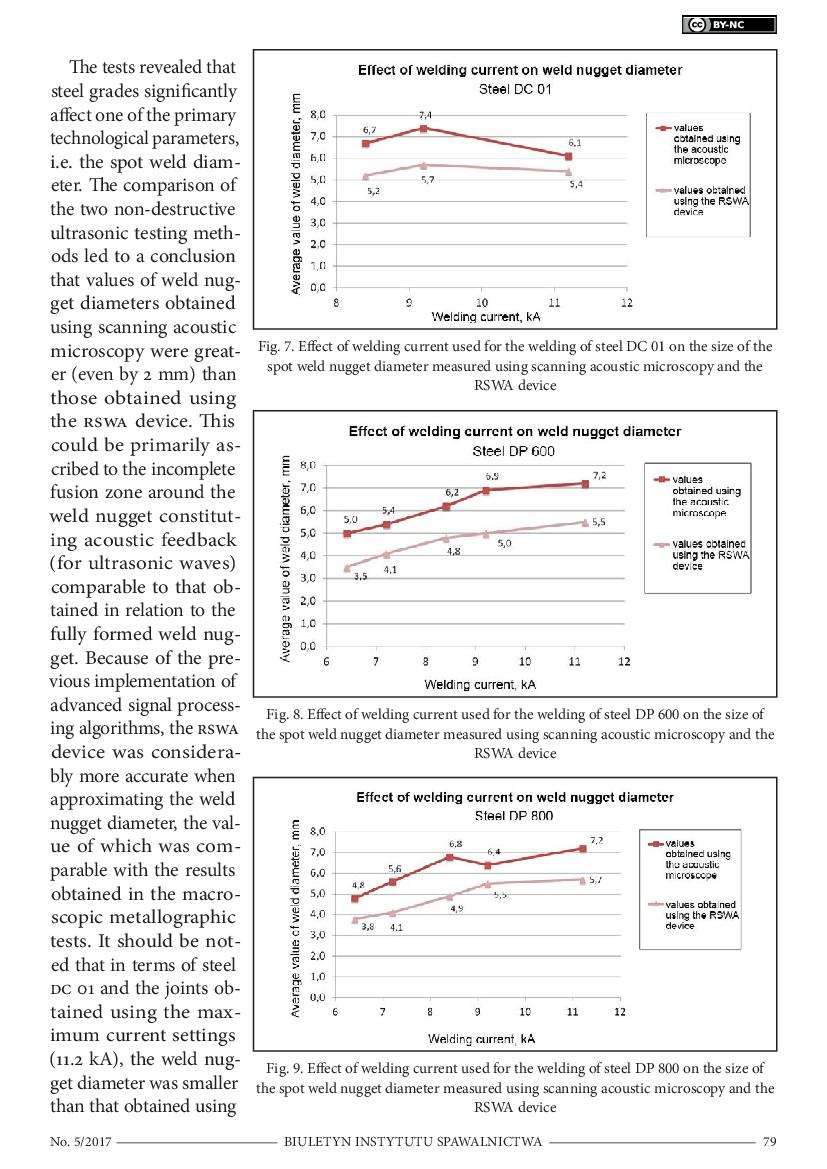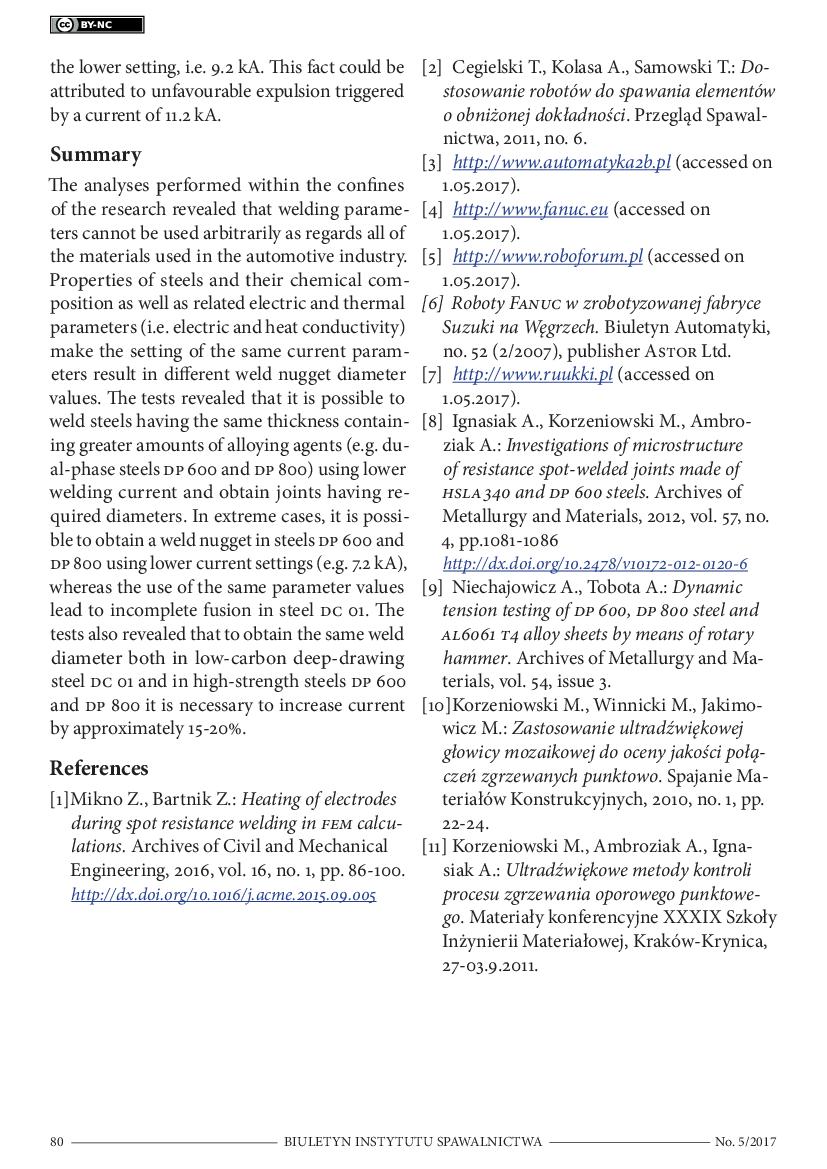Effect of Steel Grades on Technological Properties of Spot Welds
Because of varying mechanical properties, (e.g. yield point, tensile strength), electric (e.g. electric conductance) and a heat conductivity coefficient, the use of the same welding process parameters leads to the formation of welds having various diameters depending on steels grades subjected to welding [1]. The article describes the effect of typical steels used in the automotive industry (e.g. DC 01, DP 600, DP 800) on the weld diameter, i.e. the primary technological parameter of a welded joint. To ensure process repeatability, welded joints were made using a robotic welding station. Afterwards, weld diameters were measured using destructive tests (technological peeling tests and metallographic examination) and non-destructive tests, i.e. ultrasonic tests performed using an RSWA machine provided with a phased-array transducer and acoustic scanning microscopy.
 1 / 8
1 / 8
 2 & 3 / 8
2 & 3 / 8
 4 & 5 / 8
4 & 5 / 8
 6 & 7 / 8
6 & 7 / 8 8 / 8
8 / 8


